Tokyo Tourism Information
Tokyo is one of the most exciting cities in the world, famous for its ancient culture, traditions and city highlights. But also it's renowned for technology, shopping, eating and even nightlife. Japan's capital city, is bursting with excellent restaurants for all budgets, its nightlife is one of the hottest in the world, the shopping scene extends day and night, the crime rate is virtually non-existent, there are fascinating ancient sites to be explored and the public transport is arguably the most efficient in the world.
A holiday in Tokyo is definitely not advised for those who don't like tight spaces, but those seeking a sophisticated getaway with a touch of oriental culture will thrive in this seething metropolis, and those in search of some retail therapy will be delighted with a trip to Tokyo!
Tokyo has a humid subtropical climate and four distinct seasons. The summer months (June to August) are hot and sticky due to an unpleasant level of humidity, while winters (December to February) can get fairly cold, but are clear and dry. The warmest month is August, which averages 33°C, and the coolest month is January, averaging 4°C. Summers can be rainy and Tokyo's rainy season usually lasts from early June to late July. The rain is not constant and the city still gets plenty of sun over this period.
Typhoons are most likely to affect the city in August and September. Snowfall is now more rare in Tokyo , but can snow occasionally in January and February. The best time to visit Tokyo is in the shoulder seasons of spring and autumn. The famous Japanese cherry blossoms tend to bloom around March and April making this the most popular time for a holiday in Japan.
The capitals network is one of the most extensive and complex in the world. Many different transport modes and lines converge into hub stations and connect at the same time with high speed rail links around the country.
Understanding how the Tokyo network works might take you some time, but it's fairly basic once you do. English writing and new trains now incorporate led coloured lighting as you go along, as well as determined sounds for precise stations.
First, arriving into Tokyo by plane, there are two main airports: Tokyo Narita, which serves most international traffic and low cost airlines. Tokyo Haneda (HND) is served by the national airlines (ANA and Japan Airlines) for their most domestic and international routes.
- Tokyo Narita: Is further away from the city. The simplest and cheapest option is to take the local train-line, Keisei Main line, which connects the airport (NRT) with the city centre at Ueno station (links with metro). The journey will take approximately 70 min and cost ¥1030. Alternatively you can go to Tokyo metro station by JR Train which costs ¥1320 for one hour. However you have the possibility to take the Skyliner (High speed to Ueno station), which is more expensive by direct.
- Tokyo Haneda: Is conveniently located south of Tokyo city, meaning that only takes 30 min to commute into the centre. The quickest way is to take the monorail, to Hamamatsucho Station, where you can change to the JR Yamanote or JR Keihin-Tohoku Line to Tokyo Station for example. The monorail costs 500 Yen. Another option is to take the local train, (Keikyu Line) to Shinagawa Station, where you can transfer to the Tokyo underground and other JR lines. The trip to Shinagawa Station costs 410 yen. Additionally there are also busses which depart frequently from both Shinjuku and Tokyo Stations.
Also in Tokyo you will find JR lines (Japan Rail), Shinkansen Lines (High Speed Rail),and busses. It's possible to use them to commute around the city but for convenience it's better to use the metro.There are two metro systems in Tokyo, the Tokyo Metro and the Toei lines. Both reach many different destinations around the city and can be appealing for visitors. Getting the combined metro daily card is a good suggestion. For one day pass it's ¥1000 or for a 24h ticket for the metro of Tokyo only is ¥600. For the metro map of Tokyo, check the map link below.
You can pay using single tickets, day passes or using the "Suica pass". It's a magnetic card which you need to top up and costs 500 Yen.Also you can pay now with Apple pay, if you have the "Suica" App.
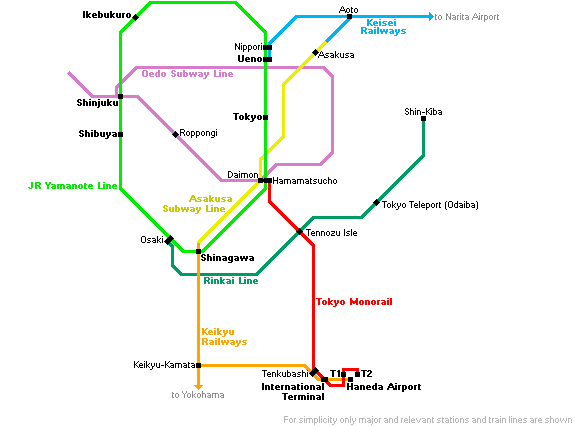
Tokyo is one of the most interesting cities of the world by it's modern construction, skyscrapers and luminous streets at night. But Tokyo has grown and modernised in a very short time also due devastating natural and man-made disasters. Tokyo has had more than its fair share of historical setbacks and triumphs, mainly intense wars which left the city decimated to rubble. Therefore the amount of historical evidence dating back several centuries is limited.
Nowadays the culture is based on it's architecture, a flourishing arts scene and rapid growing economies, always a step ahead.
Because the city is so large we have divided this section into tabs. Below, you will find, "Tokyo districts and major sights" where you can read more about what to see and do in each district and its highlights.
You can access the building for a birds view of the city for free! It's the headquarters of the governor and assembly of Tokyo. It’s just a short distance from Shinjuku station.
At 243 meters, it’s also the 2nd tallest building within the city.
The building has two observatories (one for each tower) which are open free of charge to the public. It offers a viewing of the city from the 45th floors, 202 meters above ground. The Observatory is open from 9.30 AM to 5.30 PM. The other tower has a cafe and a bar which is open till 11pm.
The dormant volcano of Mount Fuji, is 100 Km southwest of Tokyo. It has converted on a "must" sight, if you are travelling to Tokyo. Its symmetrical 3,776m, snow-crowned summit has become as symbolic of Japan as the country's own flag, featuring in poetry and art through the ages and considered a holy site in Japanese culture. The mountain, which is the highest in Japan, has many historical and mythological associations; for instance, ancient samurai used the base of the mountain as a remote training area, near the present day town of Gotemba.
There are six trails to the summit, of which the Kawaguchiko Trail is the easiest, being quite manageable even for children and the elderly as long as they have stamina and good shoes. Overnight huts are available for those wanting to stay a night or two on the mountain. The official climbing season is from 1 July to the end of August as in winter snow makes the ascent too dangerous.
The are two options to reach Mount Fuji from Tokyo; by organised tour or by taking public transport. Read more about Mount Fuji and how to get there below in the next guide.
The nightlife in Tokyo is spectacular. The city has everything from geisha bars to jazz clubs, dive bars referred to as 'shot bars' to themed dance clubs. It is legal to drink out in the streets and vending machines even stock cans of beer!
A good way to enjoy Tokyo's nightlife is in an izakaya, a pub-style watering hole serving food and drink. Western-style bars are much more expensive than those with local flavour, though chains like The Hub have happy-hour prices that are more reasonable.
Roppongi is the top nightlife district in Tokyo, where the locals are very friendly to gaijin (Westerners). Be wary of hostesses and patrons who try to lure you into one of the district's many gentlemen's clubs, where drinks are prohibitively expensive!
Shibuya also has a number of nightclubs, and 🌈Shinjuku is home to both Tokyo's red-light district and its most popular gay bars.
For less expensive bars that cater to students and backpackers, go a little further to the Shimokitazawa, Koenji, and Nakano districts.
Many bars and lounges impose a table charge, which includes snacks like nuts or chips. Not all venues charge and policies vary, so ask before you order anything. Note that the legal age for both drinking and smoking in Japan is 20.
Those looking for a more cultured evening can catch a traditional kabuki performance at the Kabuki-za theatre in Ginza, (it is possible to attend and pay for only one act as opposed to the whole production to get a taste for the art form).
You can also see traditional Western music performances by the Tokyo and NHK Symphony Orchestras at various theatres around Tokyo. Check the Japan Times for concert information.
Tokyo can be a heaven for shoppers, because of the amount of things that can be found on sale, any spare part, that might be needed for something, will be found in Tokyo!
But also it can be a stressful experience to shop in Tokyo, due to the size of the malls, the many side streets and more importantly, the lack of many shop owners to speak in any English! i
However, coming to shop in Tokyo is quite possibly the most futuristic shopping environment in the world, in which you can purchase everything from underwear to watermelons from vending machines while never interacting with a human. Ginza and Shibuya districts will confirm this.
Tokyo is also famous for its electronics stores, the biggest concentration of which can be found in Akihabara, Tokyo's 'Electric Town'. Despite the wide range, you will struggle to find genuine bargains and don't expect to negotiate at all, on price. Nevertheless, Akihabara is a colourful and exciting shopping district and the manga and anime stores will delight many.
Shopping malls have also been taken to another level in Tokyo. Shinjuku Station is surrounded by multi-level shopping stores selling everything under the sun. Big name chains such as Keio and Isetan can be accessed directly from the station. They both offer tax-free shopping and European language assistance. For a more upmarket department store experience, visit Mitsukoshi, which has several branches throughout the city.
Tokyo isn't known for flea markets, but two that are worth a visit for artisan-style gifts are Togo Shrine in Harajuku, on the first and fourth Sundays of each month, and Nogi Shrine, on the second Sunday of each month. There are many small markets around the various temples and shrines.
Essential purchases in Tokyo include traditional items like Daruma dolls and crafts such as ceramics and chop-sticks. Kimonos are another good purchase although those made from pure silk, as true kimonos are, will be expensive. A good place to browse for souvenirs is the Oriental Bazaar and Omotesando, both of which offer good value and plenty of interesting social scenery.
Space in the city is a major issue and Japanese are experts on how to use every corner and empty space to maximise potential. Japanese rooms are traditionally a mat on the floor, known as futon. These are advertised as traditional rooms when you book so do not get confused as to expect a traditional European queen size bed!
Another option to consider if you are on a budget is staying in Hotels and hostels which offer Capsule type accommodation. These rooms are essentially piled up bed cabins surrounded in plastic or wood, long enough for one person to sleep and only being able to access the bed through one side, either the end of the bed or the side. Shared bathroom and showers are typical, often being Japanese style also (open showers).
Other peculiarities of the capsule rooms are the fact that there is no possibility to leave your luggage there if you are staying a few days. Each time you must clear the Capsule by 10-11am and leave your belongings in a locker. Also many places make you take off your shoes before going into the Capsule rooms. Capsule rooms can be cheap at €20 per night.
However, if you prefer the spacious Hotel rooms and comfortable normal beds you will have to pay the price. Rooms would be at least €60 per night!
As being such a rapid and growing city with so much to do and see, Tokyo is often a city you will see new things each time you go. For a first time visit and to see the most essential and submerge a little in the culture 5 nights would be just about the minimum, including a trip to Mount Fuji.
But if you are really planning to see as much as possible and experience the culture and nightlife, up to 10 days would be better value.
Tokyo districts and major sights 🗺️
Asakusa district, you will find the Kaminarimon which is the outer of two large entrance gates that ultimately leads to the Sensō-ji in Asakusa. The gate, with its lantern and statues, is very popular with tourists and hosts a market with all the souvenir and traditional hand-craft Japanese items at good prices.The Sensō-ji is an ancient Buddhist temple it is Tokyo's oldest temple, and one of its most significant.
Also nearby you will see the Tokyo Skytree, an office and shopping centre tower with a restaurant and observation deck with 360 degree views. It's Japan's tallest structure at a full height of 634 metres.
Shibuyadistrict, it's the place for everything. Cutting-edge fashion boutiques, world-class nightclubs, record shops, hip bars, dining options ranging from fancy resturatns to fast food and buffets. Basically anything you want to buy you can find it here.
For culture you will find the Meiji Jingu Shrine, dedicated to the deified spirits of Emperor Meiji and his wife, Empress Shōken.
✔️Tip: Walk across the famous intersection outside Shibuya Station. On sunny afternoons or clear evenings, the surrounding area is packed with shoppers, students, young couples and commuters. When the lights turn red for the traffic, pedestrians surge into the intersection from all sides. You can observe this moment of organised chaos from the second-story window of the Starbucks in the Tsutaya building on the crossing's north side. To get there take the JR Yamanote line to Shibuya station, Hachiko exit.
Shinjuku district, it is a major commercial and administrative centre, housing the busiest railway station in the world and the Tokyo Metropolitan Government Building, amongst other administration buildings. It's largely popular for shopping, food, technology-gadgets outlets and entertainment. Shinjuku is centre of the night scene at Tokyo and offers plenty of night bars and clubs for all likes. It's also home of popular Universities so it's a young area where to find the best trends and fashion outlets.
Ueno area, Ueno Park is a spacious public park with temples visit and nice walks. Also in the park you will find the Tokyo National Museum (holds the world's largest collection of Japanese art, including ancient pottery, Buddhist sculptures, samurai swords, colourful ukiyo-e (woodblock prints), gorgeous kimonos and much more), the Tokyo Zoo, Art Museum, Nature and Science Museum and the Ueno Royal Museum. The area is also popular for shopping, restaurants and night entertainment.
Minato is referred to the "Port" by its proximity to the shore. You will find the most popular tourist attraction in Tokyo, the Tokyo Tower, located at a short walk from Onarimon Station, it's a communications and observation tower. At 333 metres, it is the second-tallest structure in Japan. San'en-zan Zōjō-ji is a Buddhist temple, next to the Tokyo Tower.
You will find also the Tokyo Imperial Palace, the primary residence of the Emperor of Japan. It is a large park-like area located in the Chiyoda area of Tokyo (take metro to Tokyo Station). Contains buildings including the main palace, the private residences of the Imperial Family, an archive, museums and administrative offices.
Tsukiji Fish Market, get up early to witness the world's largest fish market. (Tsukijishijo Station) Visitors must register by 0500 at the information centre for a special tour and the market lasts till midday. Plenty of restaurants beside the market offer fresh Sushi of exceptional quality.
Also close by you will find, Odaiba, an artificial island. In recent years it has become immensely popular with foreign tourists. Take a ride on Yurikamome and water buses for a mode of transportation that is different from the usual, and for a feel of Tokyo Bay’s sea breeze. Visitors can witness the beauty of the sunset and the night view from here.
Don't miss the the Rainbow Bridge, a suspension bridge crossing northern Tokyo Bay between Shibaura Pier and Odaiba which it lit up at night in the rainbow colours!
Akihabara, day or night there is always something to see in Akihabara, the main street is lined with tall buildings covered in colourful ads depicting sales and anime characters. There are names you'll recognise, like Sega, and many you definitely won't. Tiny shops focus on one microscopic niche of the electronics world. You can find things like a new switch for your old VCR, a single LED, fuses, cables, or random parts you've never seen before. It's worth exploring down the narrow alleys and corridors, there are hundred of stalls and stores.
Come to Akihabara if you are seeking entertainment. The anime/manga stores are all located here and you will find multitude of playing stations divided in several floors. Also it's popular to find the "Maid cafes" which feature Manga style girls dressed up in a maid uniform and performing a show for the public. It cost about ¥1000 to get in plus drinks.
Tokyo Photo Slide 📷
Mount Fuji Tourism Information
As mentioned, Mount Fuji, is an important sight not to miss whilst in Japan, and probably it's the best suggestion to visit. An active stratovolcano that last erupted in 1707–08. It it 100 KM of Tokyo, and can be seen from there on a clear day. Mount Fuji is a well-known symbol of Japan and it is frequently depicted in art and photographs. Therefore being very popular for visitors and climbers. It was added to the World Heritage List as a Cultural Site per UNESCO. Also there are important sites to see in the surroundings of the mountain; Shrines, Lake Yamanaka, Lake Kawaguchiko, Oshino Hakkai hot springs, temples and numerous places to dine, and shop for souvenirs.
Unfortunately Mount Fuji is so high that most times you will not be able to see the top as it's covered in clouds most of the year with only a 10% of visitors able to see it completely clear. Plan the trip according to the weather but mostly in the summer you will have better chances of seeing it or during some other days when there are clear skies which have been forecasted in advance.
To get there, you have two options:
- By tour from Tokyo, for the most easy and comfortable option. The tours leave in the morning and come back in the evening. They cost about €100 per person including optional lunch. Unfortunately Mount Fuji is so high that most times you will not be able to see the top as it's covered in clouds most of the year with only a 10% of visitors able to see it completely clear. Plan the trip according to the weather but mostly in the summer you will have better chances of seeing it. (tours operate year round and although you might not see the mountain, the organisers try their best to keep you entertained and provide ample opportunities to see many other sites during the day to make it an interesting tour).
- By public transport, alternatively if you feel more adventurous, you can visit Mount Fuji without spending a lot of money. Avoiding the agencies which take commission and plan everything for you. The best idea is to travel by yourself to one of the lakes, Kawaguchiko, which is closest to the mountains at 2 hours away from Tokyo city. The cost is less than €45 for a return ticket per adult. To get there take a train from Shinjuku station to Otsuki. Then you need to transfer and pay the second train. From Otsuki to Kawaguchiko. You can also get there faster if you pay another 400¥ by taking the Fujisan View Express from Otsuki.
✔️Tip: For Japan Rail holder's (JR Pass) you only need to pay from the JR line station Otsuki to Kawaguchiko, because it's a private railway.
Another tip, is to go in the morning and take pictures as the sun is still high, by the time you arrive to the lake.
✔️Tip: As you arrive to Kawaguchiko, there is a multitude of options to see the mountain. The cheapest is to walk around the lake and capture the different views of the peak as you see it. To get to the north of the lake it will take at least 1.5 hours walking. You can also go by bus or a tour can be organised from the station as an alternative to walking.
Around the lake there are plenty of things to see and do, so even staying one night could be an interesting option. Mount Fuji, is not always visible, therefore depends on the weather a lot. If it's a thick cloudy day in Tokyo, chances are you might not see it. So plan it carefully not to get disappointed.
It is possible to stay at the base of Mount Fuji with accommodations especially built to withstand lower temperatures of the region with thick walls. These hotels, are normally quite busy with groups over the Summer, so it's important to reserve in advance for the high season. The rest of the year prices are still expensive as its aimed at the richer wealthy tourist market. However, you can still find deals if you book in advance. Also Airbnb options can be prove interesting in the smalls towns nearby.
Expect prices around €60 at least per room.
Most visitors will come to Mount Fuji for a day trip. To plan well, make sure you leave in the morning for the over 2 hour trip one way from Tokyo.
Mount Fuji Photos 📷

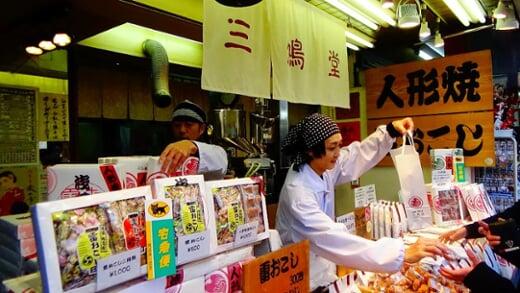
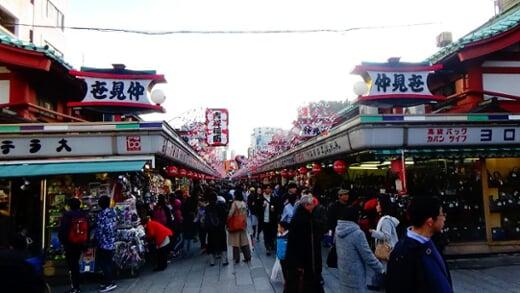
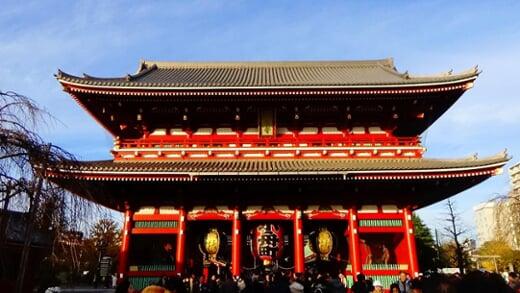
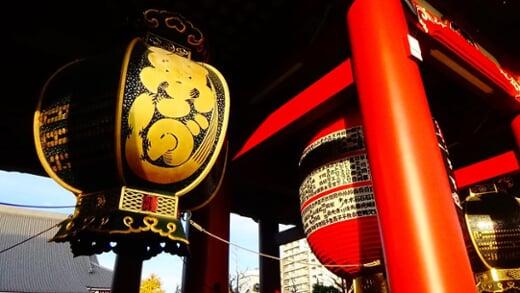
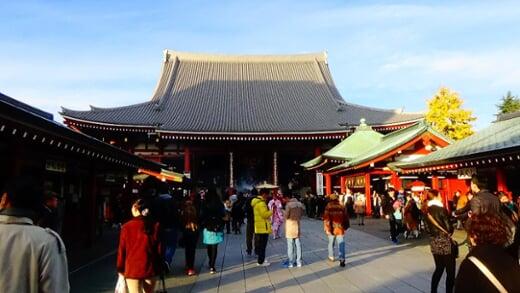
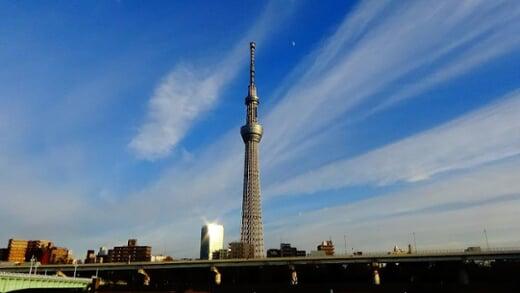
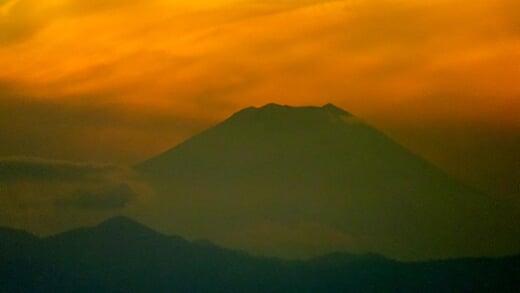
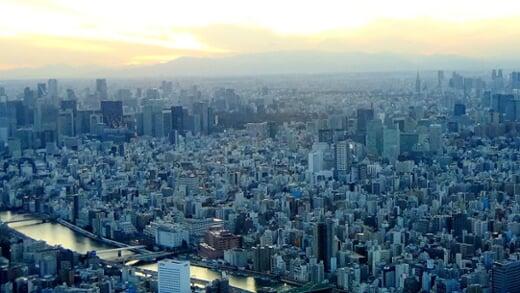
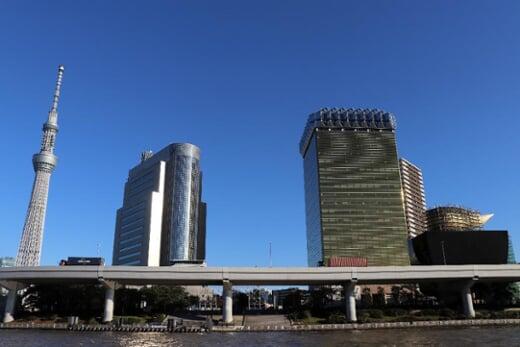
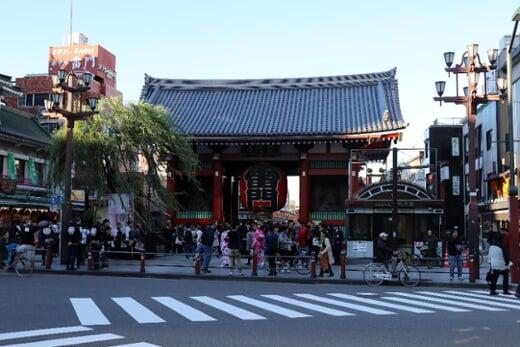
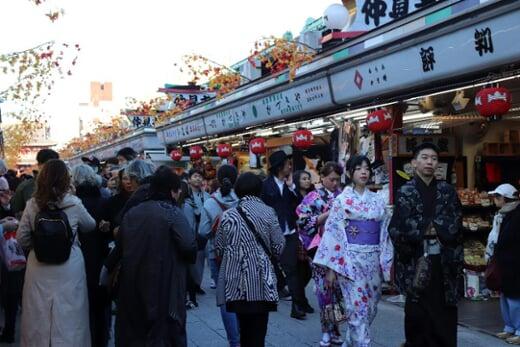
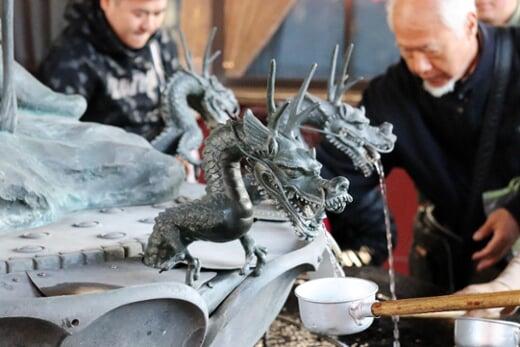
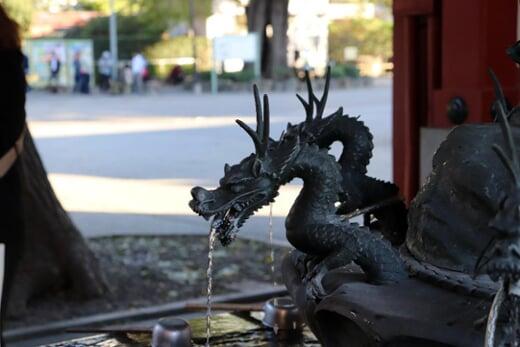
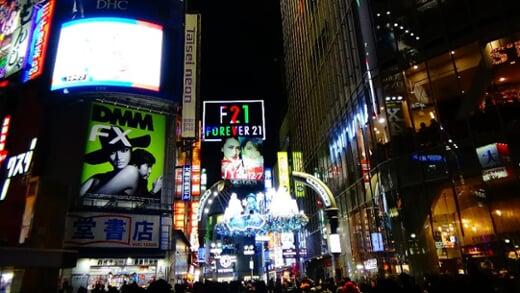
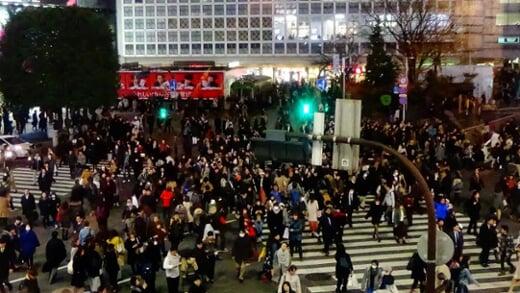
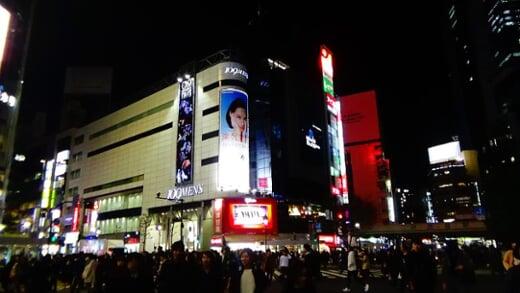
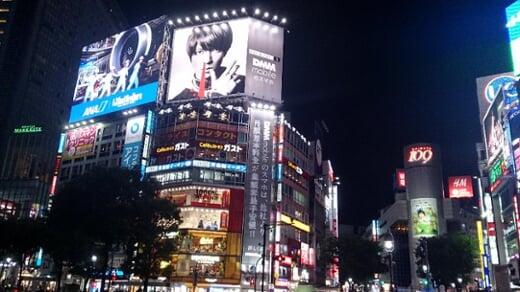
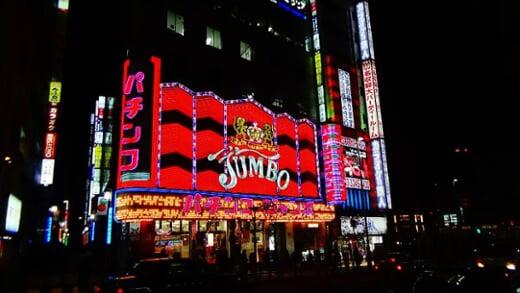
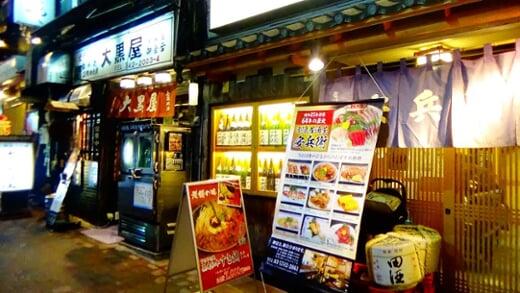
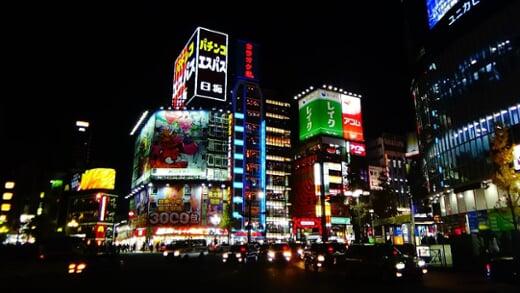
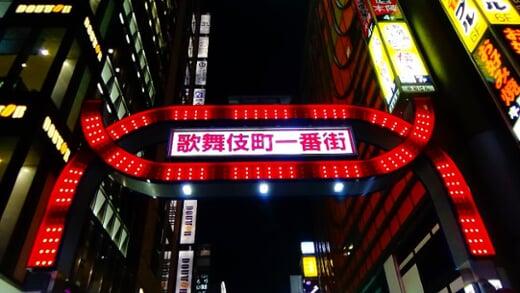
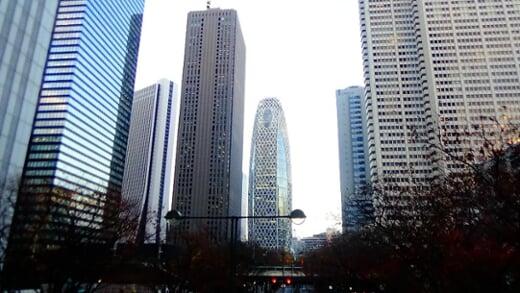
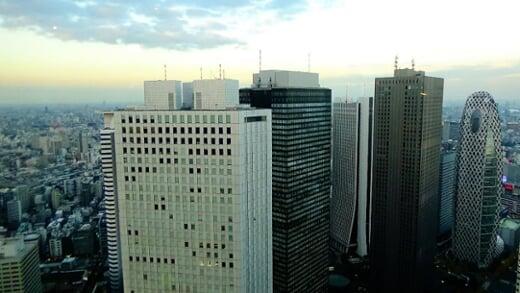
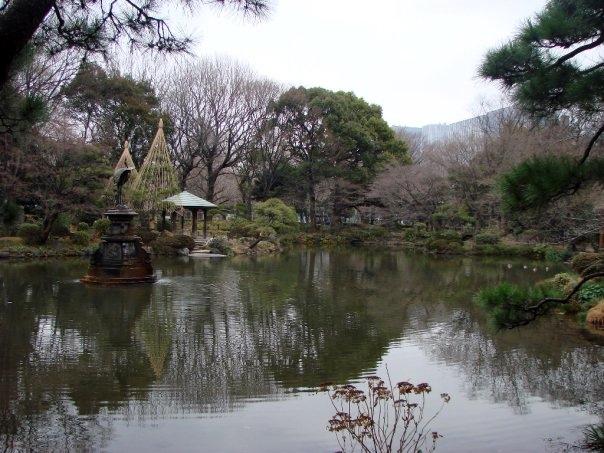
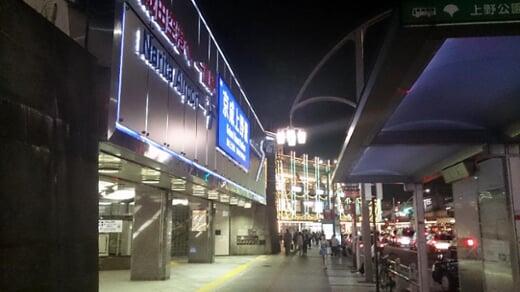
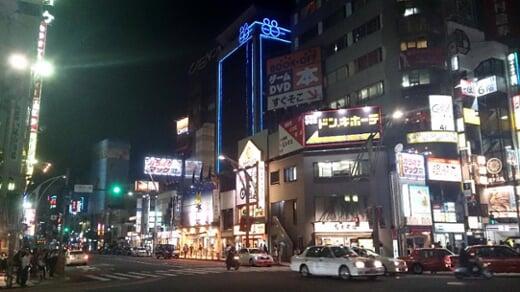
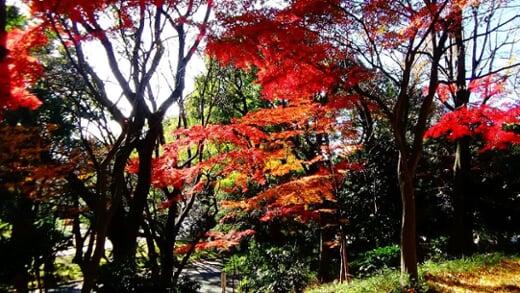
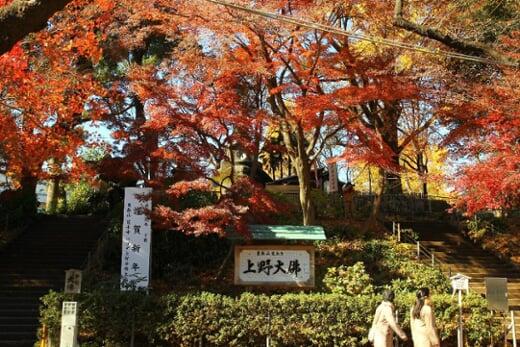
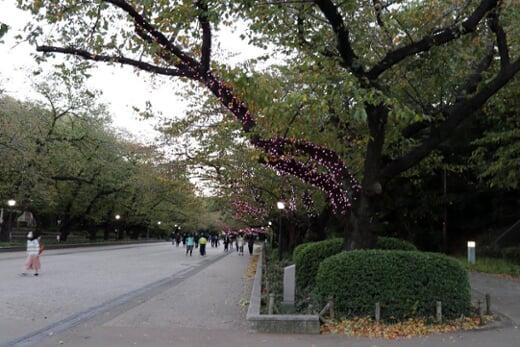
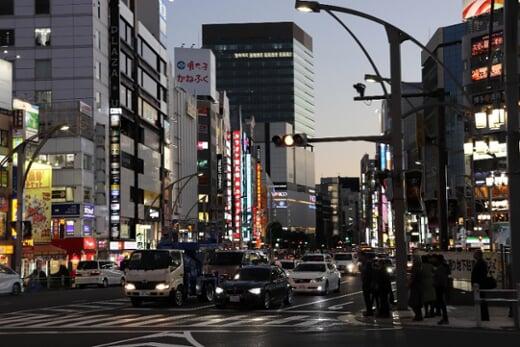
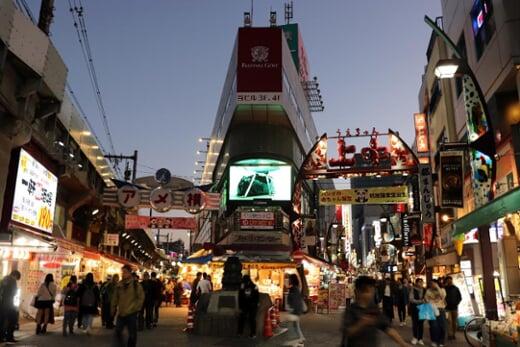
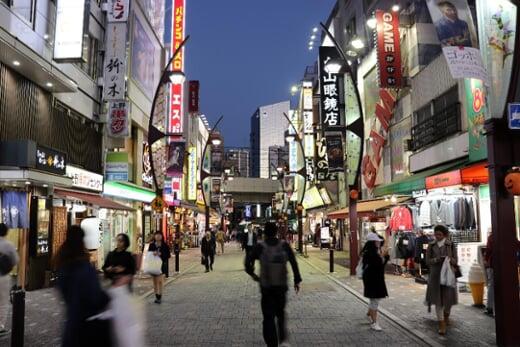
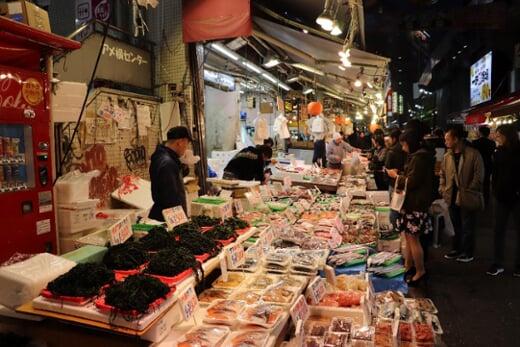
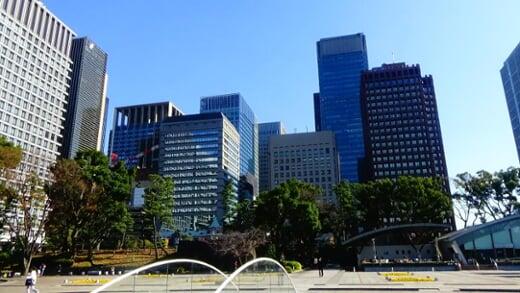
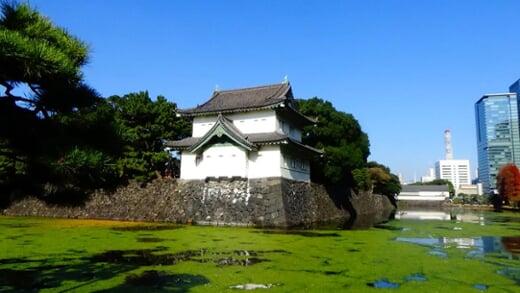
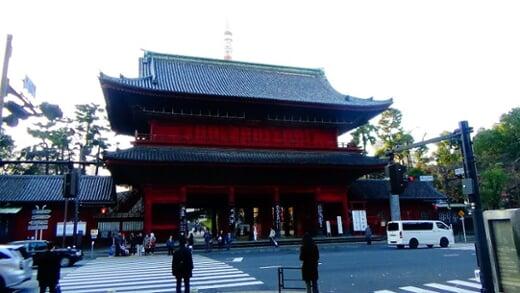
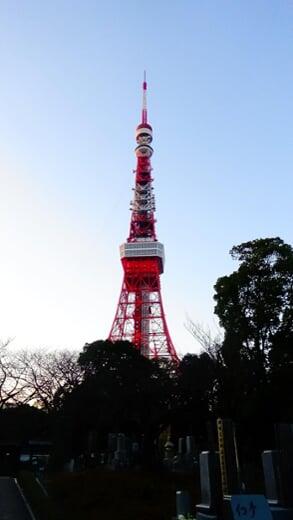
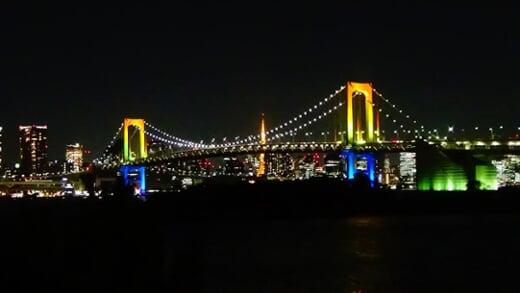
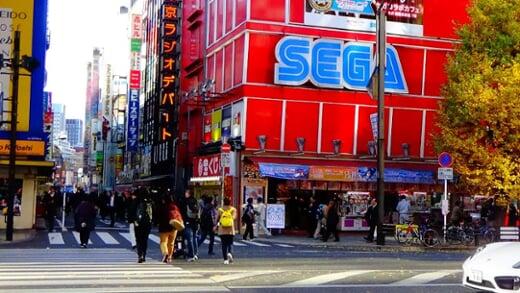
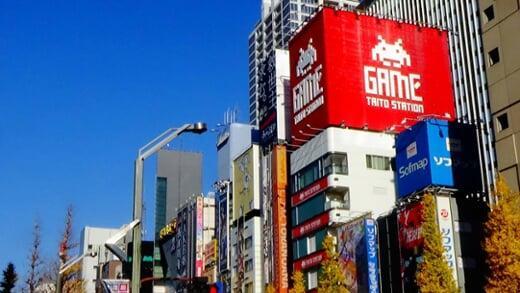
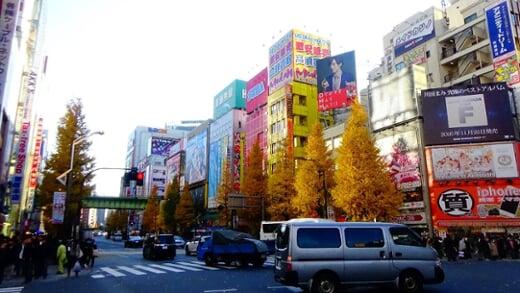
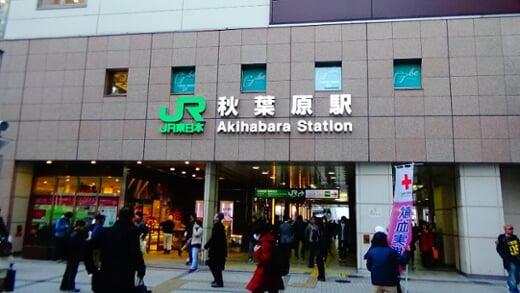
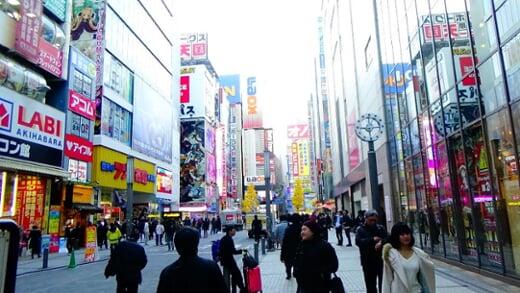

























.png)